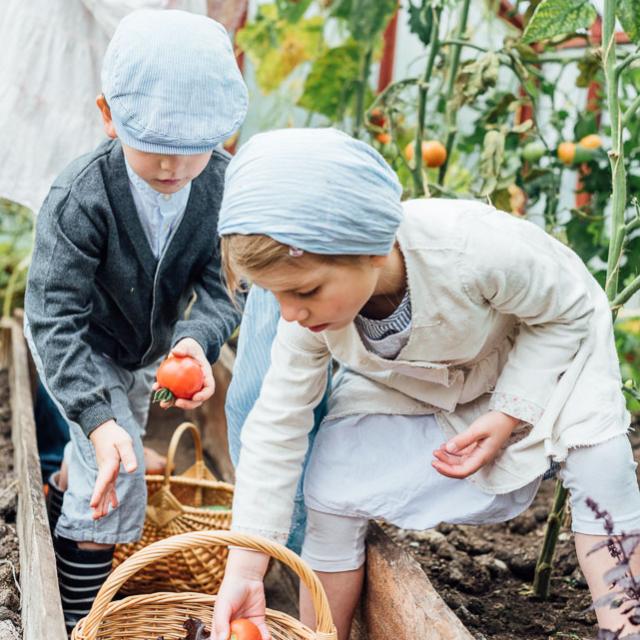Vegetables

Estonians have always loved to grow different kinds of roots, tubers, vegetables, fruit and berries. As most of the population lives in urban areas with little space for a garden plots, then options such as growing fruit trees in the backyards of apartment block buildings, little urban greenhouses and growing simpler vegetables on windowsills are gaining popularity.
Estonians are very fond of potatoes. Young summer potatoes that require no peeling are especially appreciated and enjoyed as a delicacy with a knob of butter, salt and fresh green herbs. Many of our loved summer delicacies such as chanterelle sauce, cottage cheese salad or smoked flounder simply seem to demand young potatoes as a side dish.
An integral part of Estonian cuisine is fresh cucumber-tomato salad with sour cream. As the Estonian summer is not very long, most people use greenhouses to grow tomatoes and cucumbers, but an increasing amount of urban inhabitants use the windowsills of their apartments.
Estonians also love different kinds of root vegetables – carrots, radishes, turnips and swedes. Beetroot has become especially popular during recent years; its intense colour and sweet taste has earned it a spot in the menus of sophisticated gourmet-restaurants and exciting products prepared by the food industry.
The Estonian summer is ideal for growing different kinds of legume vegetables, such as peas and beans. Estonian people also like to grow and eat headed cabbage, which is, among other things, used to prepare the irreplaceable sauerkraut for festive occasions, but cauliflower and lettuce are also popular.
The Estonian gardens usually include fruit trees and berry bushes – apple trees are most common with their fruit used in delicious apple cakes and compotes, but also in a pleasurable apple wine or cider, which is in no way inferior to its French counterparts. Our gardens also include pear, plum, cherry, damson and other fruit trees, and white-, red- and blackcurrant, gooseberry, raspberry bushes, sea buckthorn trees, etc. The home kitchens, production farms as well as large industries prepare delicious jams, syrups and other treats from these berries.
Estonians like to grow different kinds of herbs in their gardens and on their windowsills. Dill and leek are the most popular herbs that Estonians use, but parsley, chive, spinach, sourdock and increasingly often Mediterranean tastes such as basil, thyme, rosemary, etc. are also used.